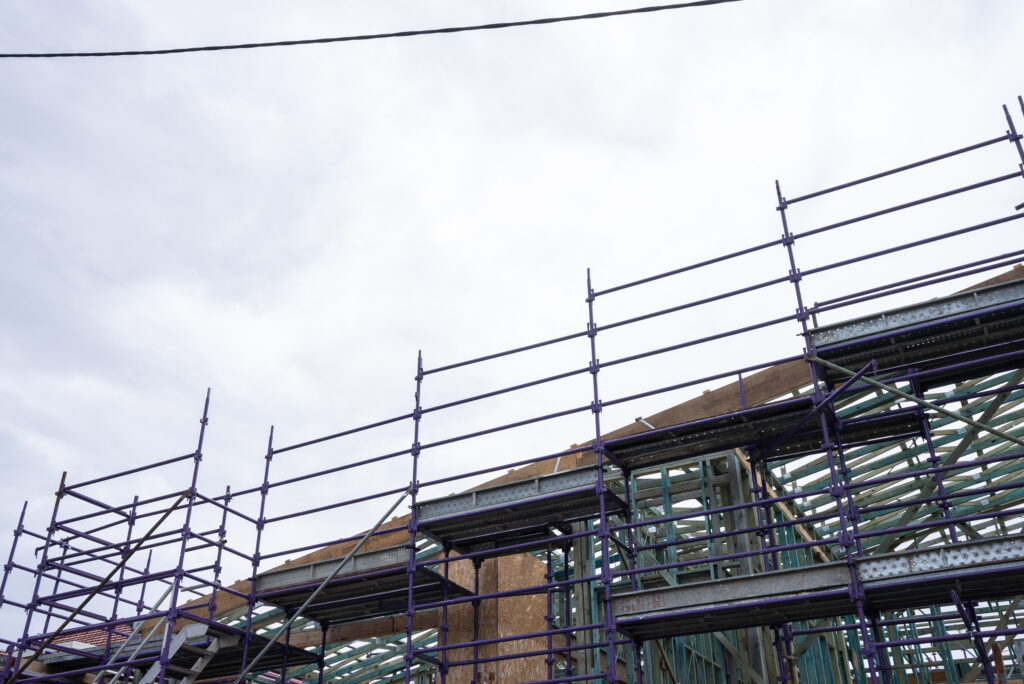How Long Does Residential Scaffolding Stay In Place?
When planning a home renovation or construction project, one of the critical considerations is the use of residential scaffolding. Proper scaffolding ensures the safety and efficiency of the work being done. However, a common question arises: How long does residential scaffolding stay in place? In this comprehensive guide, we’ll explore the factors that influence the duration scaffolding remains on-site and offer valuable insights to homeowners and contractors alike.

Understanding Residential Scaffolding
Residential scaffolding is a temporary structure used to support workers and materials during the construction, repair, or maintenance of residential buildings. It provides a safe platform for workers to perform tasks at various heights, ensuring both safety and efficiency.
Factors Influencing the Duration of Residential Scaffolding
Several factors determine how long scaffolding stays in place for residential projects:
- Project Scope and Complexity:
- Larger, more complex projects naturally require scaffolding for a longer duration. For instance, a complete home renovation involving multiple levels and extensive work will need scaffolding longer than a simple roof repair.
- Weather Conditions:
- Adverse weather can delay construction work, and extending the time scaffolding is required. Rain, hail, and high winds can halt progress, necessitating longer scaffold usage.
- Project Schedule:
- The planned timeline for the project impacts how long scaffolding remains in place. Efficient planning and execution can reduce the necessary scaffold duration.
- Regulatory Compliance:
- Local regulations and safety standards can affect scaffolding duration. Inspections and compliance checks may require adjustments to the timeline.
- Type of Work Being Done:
- Different types of work, such as painting, masonry, or window installation, have varying time requirements, influencing the scaffolding period.
Typical Duration for Residential Scaffolding
While the exact duration can vary, typical residential scaffolding stays in place for about 4 to 8 weeks. However, this can extend depending on the project specifics. Let’s break down common scenarios:
- Minor Repairs and Maintenance:
- For small-scale repairs, such as gutter cleaning or minor roof repairs, scaffolding might only be needed for a few days to a week.
- Moderate Renovations:
- Projects like painting the exterior of a house or replacing windows generally require scaffolding for 2 to 4 weeks.
- Major Renovations:
- Extensive renovations, including structural changes or multi-level work, often need scaffolding for 6 to 8 weeks or more.
Ensuring Efficient Scaffolding Use
To optimise the duration residential scaffolding remains in place, consider the following tips:
- Plan Thoroughly:
- Detailed planning and scheduling can help minimise delays and reduce scaffold usage time. Ensuring that all materials are ready and that work sequences are well-coordinated can significantly streamline the project timeline.
- Monitor Weather Forecasts:
- Keeping an eye on weather conditions can help plan work during favourable conditions, avoiding unnecessary extensions. For instance, scheduling exterior painting or roofing during dry periods can prevent weather-related delays.
- Regular Inspections:
- Conduct regular inspections to ensure scaffolding is in good condition, safe, and compliant with regulations. This can prevent unexpected delays caused by safety issues or equipment failures. Regular checks can also identify potential problems early, allowing for timely repairs or adjustments.
- Hire Experienced Professionals:
- Engaging an experienced scaffolding company like SkelScaff ensures efficient setup, maintenance, and removal of scaffolding, adhering to project timelines. As professional scaffolders, we can provide valuable advice on the best scaffold type for your project, further enhancing efficiency.
The Importance of Timely Scaffolding Removal
Leaving residential scaffolding in place longer than necessary can lead to additional costs and potential safety risks. It is crucial to remove scaffolding as soon as the work is completed to maintain site safety and control expenses. Prolonged scaffolding presence can also attract unwanted attention or misuse, posing further safety hazards.
Expert Tips for Homeowners
- Communicate with Contractors:
- Maintain open communication with your contractors to stay updated on the project’s progress and any potential delays. Clear communication can help manage expectations and ensure a smoother process.
- Stay Informed:
- Educate yourself about the scaffolding process and what to expect. Understanding the basics can help you make informed decisions and work more effectively with your contractors.
- Prioritise Safety:
- Always prioritise safety for both workers and residents. Ensure that scaffolding is erected and maintained by qualified professionals and that all safety protocols are followed.
Understanding how long residential scaffolding stays in place involves considering various factors, including the project’s scope, weather conditions, and regulatory requirements. By planning efficiently and hiring experienced professionals, you can ensure your scaffolding is in place for the optimal duration, enhancing the safety and success of your construction or renovation project.
Contact Us Today!
At SkelScaff, we understand the importance of efficient and safe scaffolding for residential projects. Whether you’re planning a minor repair or a major renovation, our experienced team is here to provide reliable residential scaffolding solutions tailored to your needs. Contact us today to discuss your project and get a free quote.


